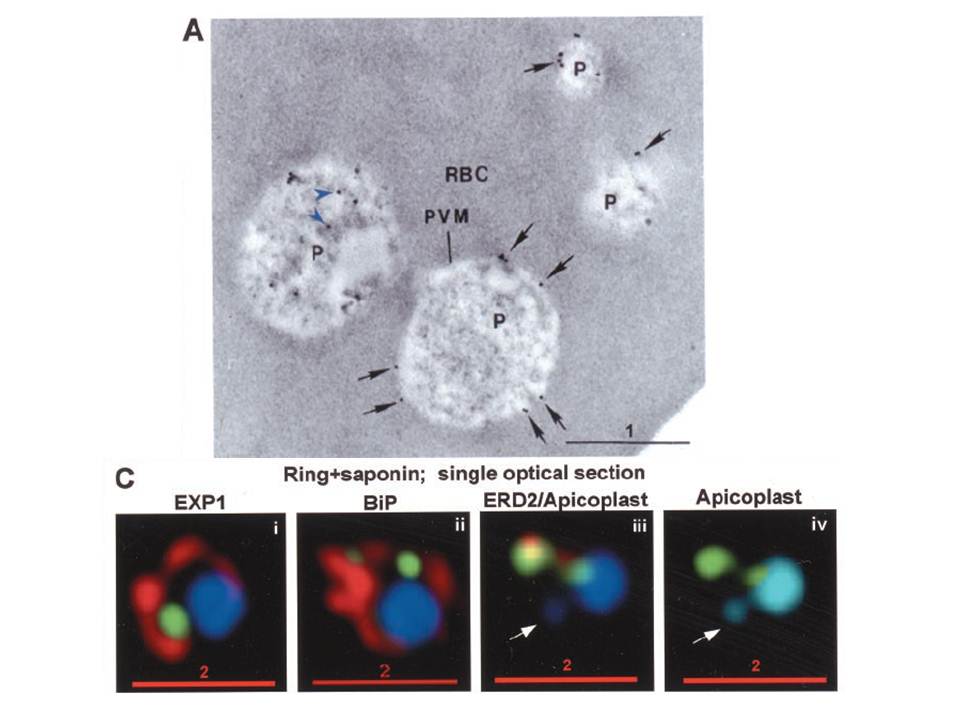PTS-GFP is detected in the parasitophorous vacuole and in apposition with the Golgi in early rings. A, immunoelectron micrograph of rings showing localization of PTS-GFP in the parasitophorous vacuole and PVM (black arrows) as well as within the parasite (P; blue
arrowheads). RBC, red blood cell. Scale bar, 1 mm. Gold particles detecting PTS-GFP are detected at the parasitophorous vacuole and vacuolar membrane (indicated by black arrows) of 6–12-h rings. Internal sites of PTS-GFP staining are also seen. PTS-GFP fluorescence showed some overlap with PfEXP1 a marker for the PVM as well as the Golgi marker PfERD2, consistent with the presence of label in the PV and internal secretory sites. C, i–iv: single optical sections showing green fluorescence in young rings permeabilized with 0.01% saponin relative to secretory markers PfEXP1, PfBiP, PfERD2 (shown in red in i–iii), and apicoplast DNA (marked with an arrow in iii and iv), as detected by indirect immunofluorescence and DeltaVision Microscopy In C, iv, the Hoechst stain is pseudo-colored cyan to facilitate visualization of apicoplast DNA. With 0.01% saponin (, i–iii) revealed loss of the peripheral green fluorescence (C, i–iii). Instead, the saponin-insensitive PTS-GFP associated green fluorescence was largely detectable in a single, major site within the parasite. As expected this site showed no overlap with the PVM marker PfEXP1 (C, i). It also showed no significant overlap with the ER marker BiP (C, ii). PTS-GFP showed no overlap with apicoplast DNA (C, iii and iv; apicoplast DNA is marked with an arrow. However, it was closely apposed to and partially overlapped with the PfERD2 Golgi site (C, iii).
Cheresh P, Harrison T, Fujioka H, Haldar K. Targeting the malarial plastid via the parasitophorous vacuole. J Biol Chem. 2002 277(18):16265-77. PMID: 11815606
Other associated proteins
| PFID | Formal Annotation |
|---|---|
| PF3D7_0208500 | acyl carrier protein |
| PF3D7_1353600 | ER lumen protein retaining receptor |
